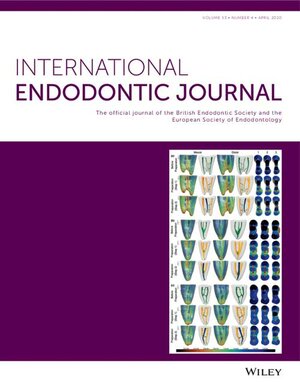Gut microbiota dysbiosis links chronic apical periodontitis to liver fibrosis in nonalcoholic fatty liver disease: Insights from a mouse model
Abstract
Aim
In this study, we investigated the systemic implications of chronic apical periodontitis (CAP). CAP may contribute to the nonalcoholic fatty liver disease (NAFLD) progression through the gut microbiota and its metabolites, which are related to the degree of fibrosis.
Methodology
Sixteen 7-week-old male apolipoprotein E knockout (apoE−/−) mice were randomly divided into two groups: the CAP and Con groups. A CAP model was established by sealing the first- and second-maxillary molars with bacterium-containing cotton balls. Apical lesions were evaluated by micro-CT. Histological evaluations of NAFLD were performed using second harmonic generation/two-photon excitation fluorescence (SHG/TPEF) assays. Additionally, we comprehensively analyzed the gut microbiota using 16S rRNA gene sequencing and explored metabolic profiles by liquid chromatography–mass spectrometry (LC–MS). Immunofluorescence analysis was used to examine the impact of CAP on tight junction proteins and mucin expression. Transcriptome assays have elucidated gene expression alterations in liver tissues.
Results
Micro-CT scans revealed an evident periapical bone loss in the CAP group, and the total collagen percentage was increased (Con, 0.0361 ± 0.00510%, CAP, 0.0589 ± 0.00731%, p < .05). 16S rRNA sequencing revealed reduced diversity and distinct taxonomic enrichment in the CAP group. Metabolomic assessments revealed that differentially enriched metabolites, including D-galactosamine, were enriched and that 16-hydroxyhexadecanoic acid and 3-methylindole were depleted in the CAP group. Immunofluorescence analyses revealed disruptions in tight junction proteins and mucin production, indicating intestinal barrier integrity disruption. Liver transcriptome analysis revealed upregulation of Lpin-1 expression in the CAP group.
Conclusion
This study provides comprehensive evidence of the systemic effects of CAP on liver fibrosis in NAFLD patients by elucidating alterations in the gut microbiota composition and metabolism.

 求助内容:
求助内容: 应助结果提醒方式:
应助结果提醒方式:


